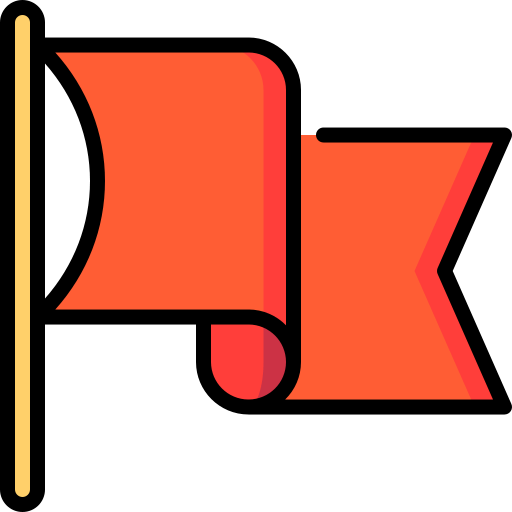Flag of Ireland
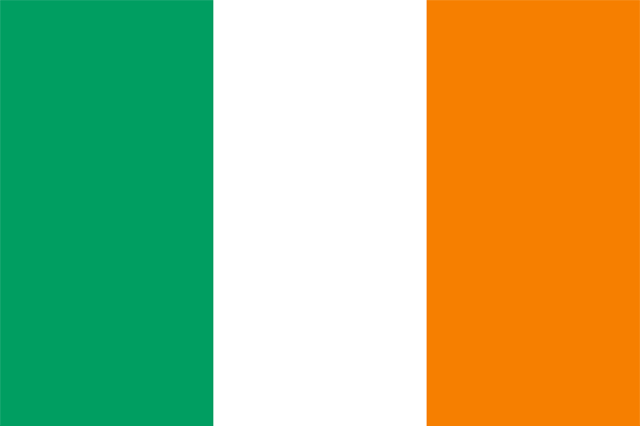
Irish flag
- Official approval of the flag: 1922 year
- Flag emoji: 🇮🇪
- Period: Modern flags
- Type of flag: Flags of countries • Flags of island countries
- Belonging to the continent: Europe
- Colors on the flag: white • green • orange
- Emblem on the flag: Without emblem
Ireland is located on the island of the same name in the northwestern part of Europe, bordering Northern Ireland (Great Britain) to the north, and is washed by the Atlantic Ocean. The capital is Dublin. The country has an area of 70,273 km² and a population of about 5 million people. The official languages are Irish and English, but English is dominant. Ireland gained independence from Great Britain in 1922. The country is known for its cultural heritage, including Celtic history and literature. The main ethnic group is the Irish, with communities of English, Polish and Lithuanian.
The flag of Ireland, known as the tricolor, is the official symbol of the Republic of Ireland. It consists of three vertical stripes of equal width: green, white, and orange. This design symbolizes unity and peace between the country’s various traditions and communities, including Catholics and Protestants.
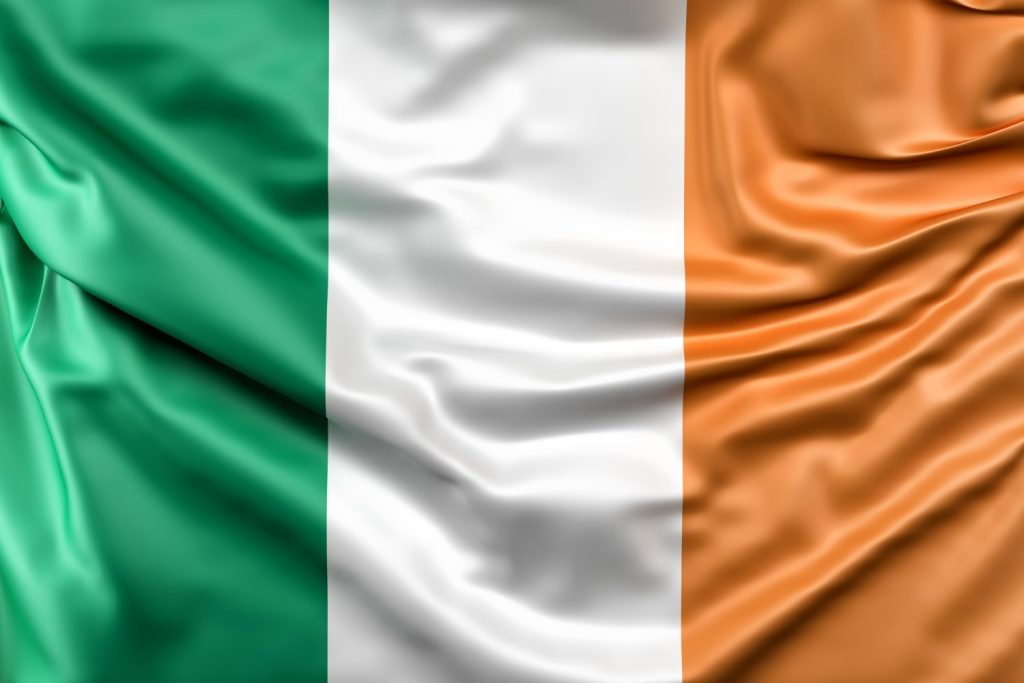
History of the Irish flag
The history of the Irish flag is closely linked to the struggle for Irish independence and unification. Its colors reflect deep religious and political roots.
The origin of the flag
- 1848: The Irish tricolor was first introduced by Thomas Francis Meagher, inspired by the flag of France, as a symbol of unity between Irish Catholics (green) and Protestants (orange). The white color in between represented peace between the two communities.
- XIX century: The flag was used during nationalist movements but had no official status.
Adoption of the modern flag
- 1916: During the Easter Rising, Irish rebels used the tricolor as a symbol of independence.
- 1922: After the formation of the Irish Free State, the flag was recognized as the official national symbol.
- 1937: The Irish Constitution officially adopted the green-white-orange tricolor as the national flag.
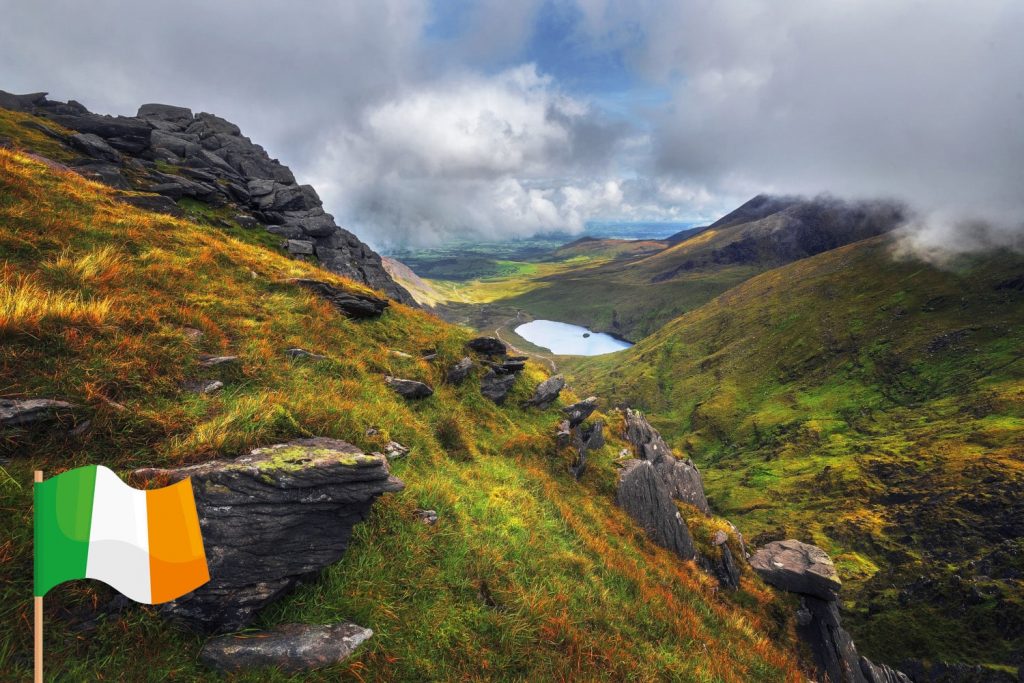
Colors of the flag of Ireland
Meaning of the flag colors
Each of the three colors of the Irish flag has a deep symbolic meaning:
- Green:
- Symbolizes the Catholic community and the Irish national revival.
- It is associated with traditional Irish lands and history.
- White:
- It represents peace and unity between Catholics and Protestants.
- Symbolizes the hope for harmonious coexistence of all communities.
- Orange:
- Represents the Protestant community and the legacy of William of Orange (King of England, Scotland and Ireland).
- It symbolizes the contribution of Protestants to Irish culture and politics.
Color codes
The official colors of the Irish flag are approved for accurate reproduction:
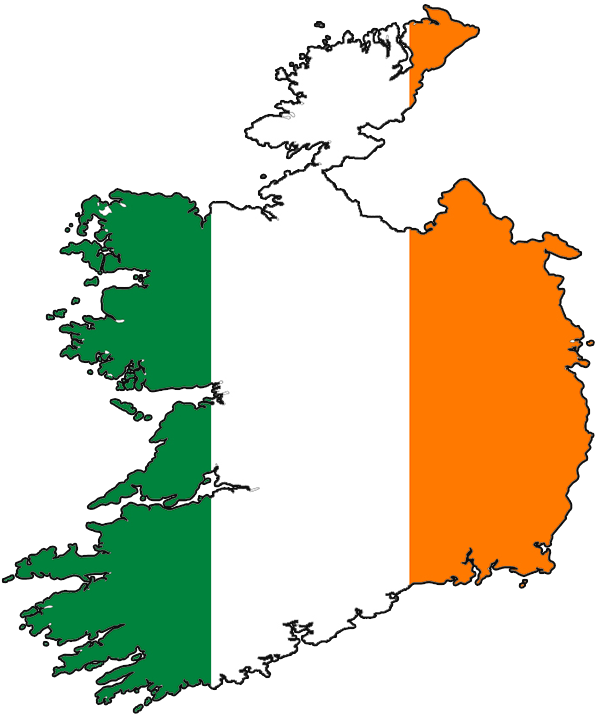
- Green:
- RGB: (22, 155, 98)
- HEX: #169B62
- CMYK: (86, 0, 77, 39)
- Pantone: 347 C
- White:
- RGB: (255, 255, 255)
- HEX: #FFFFFF
- CMYK: (0, 0, 0, 0)
- Pantone: White
- Orange:
- RGB: (255, 130, 0)
- HEX: #FF8200
- CMYK: (0, 59, 100, 0)
- Pantone: 151 C
Format and proportions
The Irish flag has a rectangular design with three vertical stripes.
Flag proportions
The official aspect ratio of the flag is 1:2, which means that the length of the flag is twice as long as its height.
The arrangement of the stripes
- The left stripe is green.
- The central stripe is white.
- The right stripe is orange.
When hung vertically, the order of colors remains the same, from left to right: green, white, orange.
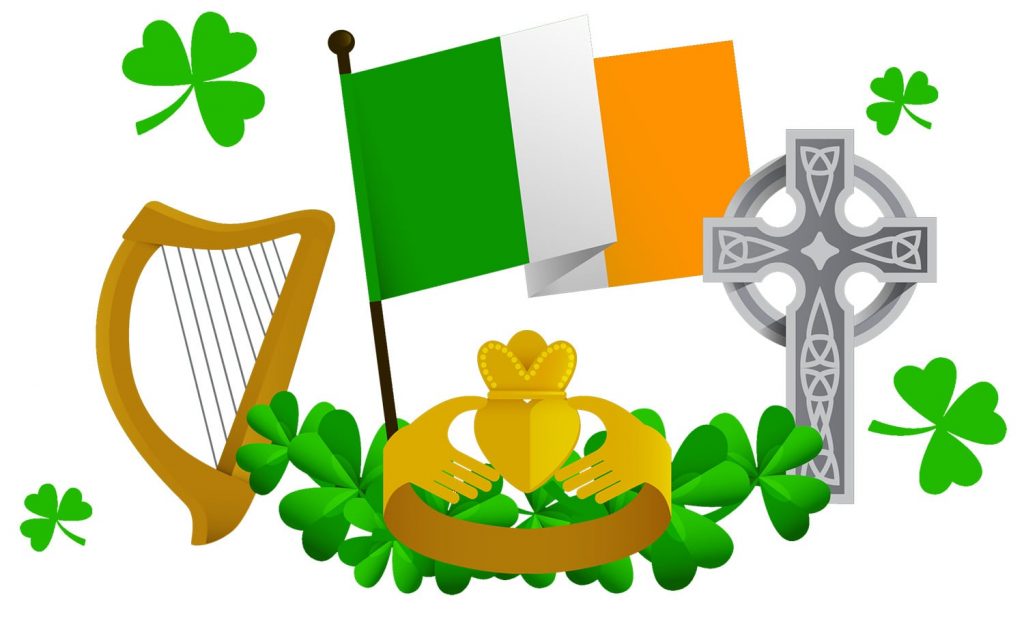
Interesting facts about the flag of Ireland
- A symbol of national unity: The flag of Ireland reflects the desire for unity between Catholics and Protestants, even if this goal has not yet been fully realized.
- St. Patrick’s Day: During the celebration of St. Patrick’s Day, the flag can be seen all over the world, as this holiday is a symbol of Irish culture.
- Similarities to other flags: The Irish tricolor is often confused with the flag of Côte d’Ivoire, but the latter has orange, white, and green colors in a different order.
The Irish flag is a symbol of national pride, the centuries-long struggle for independence, and the desire for peace. Its simple but deeply symbolic design reflects Ireland’s identity, historical heritage and hope for a brighter future.
